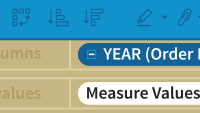Description
In this course, you will :
- introduces you to missing data, explaining what they are, how they behave in R, how to detect and count them.
- Discuss missing data visualisations, how to create overview visualisations for the entire dataset as well as over variables, cases, and other summaries, and how to explore these across groups.
- Discover how to find hidden missing values such as "missing" or "N/A" and replace them with 'NA'. You will learn how to handle implicit missing values, which are values that are implied to be missing but are not explicitly listed.
- cover how to investigate missing data dependence, including Missing Completely at Random (MCAR), Missing At Random (MAR), and Missing Not At Random (MNAR), as well as what they mean for your data analysis
- Discover workflows for dealing with missing data.
- Learn about imputation, which is the process of filling in missing values in your data.
- Learn how to impute and track missing values, as well as the benefits and drawbacks of imputations, so that you can explore, visualise, and compare the imputed data to the original values.
- Learn how to use, evaluate, and compare various imputation models, as well as investigate how different imputation models affect the inferences you can draw from the models.
Syllabus :
- Why care about missing data?
- Wrangling and tidying up missing values
- Testing missing relationships
- Connecting the dots (Imputation)









